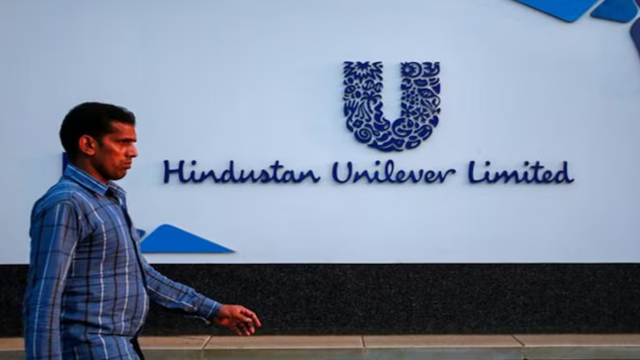October 23, 2025 : India’s leading fast-moving consumer-goods (FMCG) company, Hindustan Unilever Ltd (HUL), released its results for the second quarter of FY26 (July–September 2025), posting a modest net profit rise of approximately 3.6-4% despite challenging market conditions. The performance was buoyed by a one-off tax gain, even as revenue growth remained muted and the business faced headwinds from GST changes and channel disruptions.
Financial Highlights
- HUL reported a consolidated net profit (PAT) of ₹2,685 crore, up from ₹2,591 crore in the same quarter last year — a 3.6% year-on-year increase.
- Revenue from operations rose by about 2% to around ₹16,034 crore (some sources give ₹16,061-16,388 crore) compared to the prior year quarter.
- The company declared an interim dividend of ₹19 per equity share for FY26.
What Drove the Results
- One-time Tax Gain: The profit uptick was helped by a non-recurring tax benefit — a resolution of prior years’ tax matters — which boosted PAT. Without this gain, underlying growth would have been weaker.
- Flat Volume Growth & Revenue Impact: Underlying volume growth (UVG) was almost flat. The revenue growth of ~2% was largely driven by price increases, with minimal growth in actual consumer volume.
- GST Rate Cuts & Disruption: Around 40% of HUL’s product portfolio saw GST rates cut to 5% from 12-18% as of Sept 22, 2025. This caused temporary disruption — trade partners delayed purchases to clear older priced stock and reorder at lower prices, impacting sales timing.
- Extended Monsoon & Seasonal Pressure: Certain product categories, especially packaged foods and ice-cream, were impacted by extended monsoon conditions, which affected footfall and consumption in some regions.
- Margin Pressure: Given the muted volume growth and the GST/stock-clearance disruptions, margins were under pressure with EBITDA growth and margins contracting (in some reports).
Company Outlook & Commentary
HUL’s CEO and MD, Priya Nair, described the quarter as a “competitive performance” in a challenging environment, noting that the GST reforms are a positive long-term move but caused near-term disruption. She emphasised the expectation that trading conditions will normalise from early November as inventories settle and pricing aligns.
The company remains optimistic for the second half of FY26, stressing that once the GST transition completes and inventory ordering stabilises, volume‐led growth is expected to resume.
Implications for Investors
- The interim dividend of ₹19 per share signals confidence in cash-flow and commitment to shareholder returns, despite the slow growth environment.
- Investors should note that the underlying business growth is weak: flat volumes and only modest revenue growth point to near-term headwinds.
- The GST effect is expected to be temporary; therefore, improved growth is likely in Q3 and beyond as the disruption passes and trade reorders at new price levels.
- Monitoring will focus on how HUL recovers volume growth, manages cost pressures and leverages its portfolio transformation (premium products, digital fulfilment etc.) in the coming quarters.
Key Metrics at a Glance
- Net Profit (Q2 FY26): ~₹2,685 crore (+3.6% YoY)
- Revenue: ~₹16,034 crore (+2% YoY)
- Interim Dividend: ₹19/share
- Volume growth: flat/very low single-digit
- Interim headwinds: GST rate cuts, channel disruption, monsoon impact
Conclusion
HUL’s Q2 performance reflects a business navigating a transitional phase — the company managed to post a profit uptick thanks to a one-off tax benefit, but growth remains subdued amid a GST shock and product ordering delays. What stands out is the management’s view that this is a short-term disruption, and once conditions stabilise, the puppy of underlying growth remains.
For shareholders and market watchers, the dividend is a positive sign, but the focus will now shift to execution in H2, how volumes bounce back, margin trends and whether HUL can turn through this GST-led hiatus and reclaim stronger growth momentum.
Summary
Hindustan Unilever’s Q2 profit rose ~4% aided by a one-time tax gain while revenue grew ~2% as GST rate cuts and channel disruption weighed; interim dividend declared at ₹19 per share.


